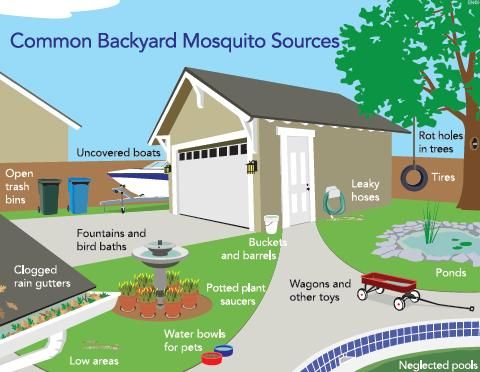
The First 2015 case of West Nile Virus in Florida was announced on July 24, 2015. For more information, view the ABC News segment below-
For UF-IFAS news, read the UF-IFAS Newwise segment on WNV
Read more about the vector, Culex nigripalpus, in the UF-IFAS Featured Creatures.
Dr. Rutledge-Connelly, Dr. Day, and Dr. Tabachnick from the University of Florida, Florida Medical Entomology Lab in Vero Beach have a UF-IFAS publication entitled “What is West Nile Virus?” In Florida, citizens are advised to protect themselves from mosquito bites. Also, it is always important for homeowners to remember that standing water can serve as a breeding ground for unwanted mosquito populations. For WNV in particularly, horse owners are advised to vaccinate horses against WNV.
Transmission: Mosquitoes transmit WNV after feeding on infected birds-the mosquito/bird/transmission cycle. For more information on the transmission of WNV, please read the information provided at– Florida Dept. of Agriculture and Consumer Services
Symptoms: Symptoms of WNV, such as fever, headache, tiredness, nausea, and vomiting, may be easily confused with other diseases. Also, only about 20% of the people who are infected will develop symptoms. For more information, visit the information available at the- World Health Organization
Surveillance: The appearance of dead birds in an area might be an early warning that the virus is present. Dead birds should be reported by contacting the local county Department of health office or by entering the information on the Florida Fish and Wildlife Conservation Commission’s dead bird reporting web site at: http://legacy.myfwc.com/bird/default.asp


More information:
CDC PSA:
West Nile Virus Publications – English/Español
Sentinel chicken tested positive for WNV in Pinellas county
References:
Hill, Stephanie and Roxanne Connelly, C. University of Florida. Southern House Mosquito. Featured Creatures. 2013. Accessed 8/10/2015 – http://entnemdept.ufl.edu/creatures/aquatic/southern_house_mosquito.htm
Florida Department of Agriculture and Consumer Services. West Nile Virus. Accessed 8/10/2-15 – http://www.freshfromflorida.com/Divisions-Offices/Animal-Industry/Education/For-the-Community/Animal-Disease-Information/West-Nile-Virus
World Health Organization. West Nile Virus. Fact sheet # 354. July 2011. Accessed 8/10/2015 – http://www.who.int/mediacentre/factsheets/fs354/en/
 0
0
